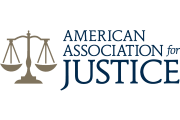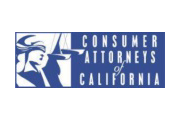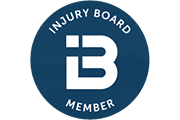San Francisco has a reputation for being a bike-friendly city, thanks to its extensive network of dedicated bike lanes and eco-conscious culture. Despite these advantages, riding a bike in the city carries significant risks. Every year, cyclists suffer serious and sometimes fatal injuries in collisions with motor vehicle drivers.
The mix of steep hills, busy intersections, and shared roads creates a challenging environment for cyclists. Cyclists and drivers alike need to take preventive measures to avoid potentially deadly collisions, enhancing safety for everyone on the road.
Dooring accidents are alarmingly common in urban environments like San Francisco. These incidents occur when drivers, parked along the street, open their vehicle doors without checking for oncoming cyclists.
Cyclists are left with little to no time to react, leading to collisions that can throw them onto the road or directly into the path of other vehicles. The force of colliding with the door can also be significant, often resulting in severe trauma.
The rise of smartphone use has led to an increase in distracted driving, a significant threat to cyclists. When drivers divert their attention to their phones, whether to text, navigate, or choose music, their awareness of the road diminishes. This lack of attention is especially dangerous for cyclists, who are less visible than cars and can easily be overlooked.
However, distracted driving does not only involve phones. Any action that takes a driver’s mind, hands, or eyes off the act of operating a vehicle can easily lead to a collision. Eating, talking with other passengers, fiddling with a radio or GPS, or daydreaming are all considered distractions while driving.
Driving under the influence of alcohol or drugs is a major cause of vehicle accidents, including those involving cyclists. Impairment affects a driver’s judgment, coordination, and reaction times, making it difficult to respond to cyclists’ movements and navigate safely. Despite this act being illegal, impaired driving occurs far too often, putting everyone on the road at risk.
In many instances, drivers make unsafe turns that put cyclists at risk. For example, they may turn right across a bike lane without noticing an approaching cyclist, leading to a serious accident. When a driver turns left, they can fail to see an oncoming cyclist who has the right of way, causing a collision as the cyclist crosses the intersection. These collisions can be prevented if drivers take the time to check their mirrors and blind spots for cyclists, as well as signal their turns well in advance.
Rear-end collisions typically occur when a cyclist is struck from behind by a faster-moving vehicle. These accidents often happen when a cyclist slows down to navigate an obstacle, make a turn, or stop at a traffic signal, and the following vehicle does not maintain a safe distance or fails to adjust its speed accordingly. The impact can launch the cyclist forward, leading to severe injuries.
Occasionally, drivers may enter bike lanes, whether due to confusion, impatience, or a deliberate choice to bypass traffic. This behavior not only endangers cyclists who use these lanes for safety but also encourages illegal and unsafe practices.
These lanes are designated for the exclusive use of bicycles, providing a safer space away from the flow of motor vehicle traffic. Vehicles driving or parking in these lanes force cyclists to swerve unexpectedly into traffic or stop abruptly, increasing the risk of accidents.
Poor road conditions, including potholes, uneven surfaces, and debris, can be especially dangerous for cyclists. While navigating these hazards, cyclists may lose control of their bicycles or be forced to make sudden maneuvers that put them in the path of vehicles. Additionally, poor road conditions can obscure cyclists’ visibility to drivers, further elevating the risk of collisions.
Accidents are more likely to occur in conditions of low visibility, such as during fog, heavy rain, or at night. In these situations, cyclists become harder to see, and the distance at which they are visible to drivers is significantly reduced. This decreased visibility can lead to drivers not seeing cyclists until it is too late to avoid a collision.
When cyclists or drivers ignore traffic signals, they disrupt the expected flow of traffic and increase the risk of accidents. For cyclists, running through a red light or stop sign can lead to collisions with vehicles that have the right of way. Similarly, vehicles that fail to obey traffic signals can strike cyclists crossing intersections legally.
Inattentional blindness occurs when a person overlooks objects in their visual field not because they can’t see them, but because their attention is focused elsewhere. This psychological phenomenon can lead to accidents when drivers look but fail to “see” cyclists, especially in busy urban environments or at cluttered intersections.
If you are involved in a bicycle accident in San Francisco, it is important to remain calm and seek help as soon as you possibly can. Call 911 to report the accident to the police and seek medical attention immediately, even if you do not feel hurt. Some symptoms may not manifest right away and delaying treatment could make your condition worse.
Document the scene of the accident, if possible, by taking photographs and videos. Collect the names and contact information of any witnesses who saw the accident occur, and exchange your details with the driver involved in the collision. Once you have received medical care for your injuries, reach out to a San Francisco bicycle accident lawyer right away.
A specialized San Francisco personal injury attorney can provide you with legal advice tailored to your situation, helping you understand your rights and the steps you can take to pursue compensation. Additionally, they can investigate the cause of your collision, identify the liable party, and argue for your right to compensation through an insurance claim or personal injury lawsuit. After your accident, contact a lawyer to learn more about your legal options and begin your journey to recovery.





